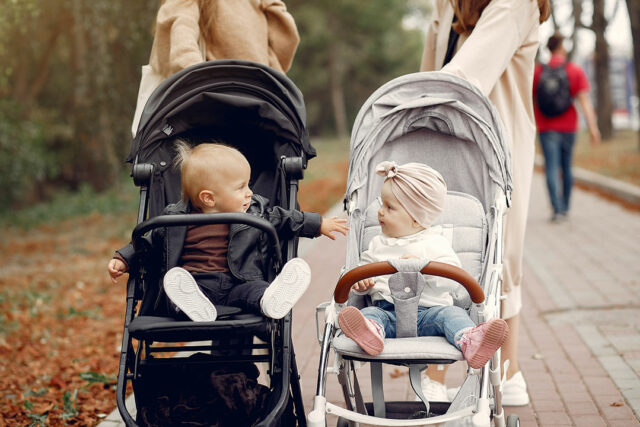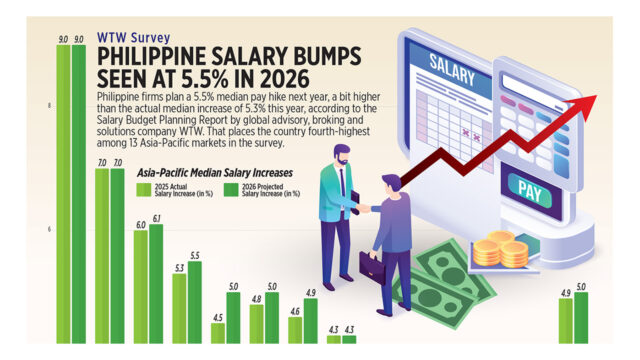Billionaires’ baby boom has lessons for our bust

By Lionel Laurent
BIRTH RATES are falling to historic lows across the developed world, and understanding why is a priority for governments worried about the impact on growth and public finances. Our own preferences and priorities play a big part, research suggests: Career progression, social norms, and how we choose to spend our time are key, as is our desire to be better and more focused parents for the current 1.38 average births per woman in Europe and 1.59 in the US (it used to be around 2.1 not so long ago). Typically, as countries get richer, fertility rates tend to decline.
So why, then, do some of the wealthiest people on the planet seem to equate status with having more, not fewer, children? Elon Musk, who dreams of repopulating the planet, has fathered 14 children. Luxury mogul Bernard Arnault has five, each with an appointed role in his LVMH Moet Hennessy Louis Vuitton SE empire. Telegram Messenger LLP owner Pavel Durov has six — not counting the eyebrow-raising 100 future heirs he claims to have fathered through sperm donations across 12 countries, something Musk’s father also appears interested in.
Maybe it’s an alpha-male thing — and not something most of us would see as exemplary fatherhood, judging by reports of how Musk treats the mothers of his infant “legion.” Yet a look at the top 100 wealthiest Americans on the Bloomberg Billionaires Index, including women like Melinda Gates and Diana Hendricks, shows they have just over three children on average — more baby boom than bust. A study of the 948 wealthiest Americans by economist Ria Wilken published in January calculated an average of 2.99 children. Billionaires do skew male overall and do a fair bit of re-marrying, so this can’t be directly compared with the national (female) fertility rate. Still, 2.99 is higher than the 1.94 average children per family recorded in US census data. Most Americans (71%) have had two children or fewer, according to last year’s General Social Survey.
It would seem that whatever the preferences and norms of the industrialized world are, they don’t neatly map onto the uber-rich.
One theory is that this is because billionaires live by a genuinely different code, more akin to Carolingian dynasties in medieval Europe than the cuddly slapstick of Cheaper by the Dozen. They’re more likely to want to prioritize succession, reproduction, and capital preservation than the rest of us. That could lead to more traditional attitudes to coupling up. Wilken estimates a whopping 95% of billionaires have a partner in an upper-class position, technically known as “homogamy,” and that billionaires’ wives are more likely to occupy positions that depend on their husband’s income. Other factors like religion may be at work.
But a simpler conclusion is that more money means having the number of kids you want. With the cost of raising a child to adulthood estimated at $310,605 in the US, no amount of preferences or norms can get away from the fact that kids are “very expensive,” as demographer Jennifer Sciubba put it. Even as fertility rates plummet in countries like Sweden and Japan, data suggests better-off men and women are more likely to have children than less well-off men and women. A United Nations survey last month found 40% of respondents blamed financial barriers for keeping them from having an ideal family size. The relationship between fertility and income decile is starting to look more U-shaped.
“The trend in fertility is driven by a rise in inequality,” says economist Matthias Doepke, author of the 2019 book Love, Money and Parenting, citing examples from the cost of accessing childcare to the cost of housing in big cities where the best-paid jobs are.
Accepting this could be key for the right kind of parent-friendly policy at a time of panic and desperate fixes — not to mention resistance to immigration. Cash bonuses for new parents, as seen in countries like Italy, Greece, and now China, are unlikely to move the needle at $500-$2,500. What might work better is access to the kind of infrastructure, housing, and work flexibility that the wealthy have in abundance, according to former Bloomberg economist Maxime Sbaihi’s recent book on falling birth rates. He cites data suggesting Norway’s push to improve daycare access from the mid-1970s improved the fertility rate by 0.1 for every 10% rise in the rate of children in care. And despite France’s own worsening outlook, its birth rate is double South Korea’s, a sign that generous support for childcare, family allowances, and parental leave can make a difference. Fairer taxation could also help.
There’s no silver bullet here. But as we pore over the roots of the baby bust, let’s not ignore the groups that appear to be booming.
BLOOMBERG OPINION


















